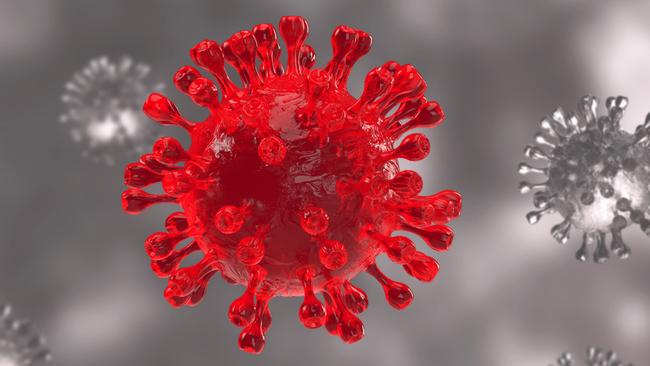
Police chief Grant Stevens occupies the top spot, having risen from 36th place last year. Chief public health officer Nicola Spurrier is now the third most influential person in the state.
South Australians were not given the chance to vote this powerful duo into office and they won’t get the chance to vote them out. Not that they are likely to, if their citations in The Advertiser reflect the broader public mode.
The newspaper’s assessment of Stevens is that he is tough but fair. Spurrier, we are told, “can rightly take much of the credit for helping to guide SA through the pandemic in such relatively good shape”.
Spurrier, with her counterparts in other states, also can take credit for much of the panic that has ruined livelihoods, separated families, disrupted childhoods and sent otherwise sane people scurrying under the bed.
Only last week she recommended that SA’s newly opened borders be slammed shut because of Omicron. Fortunately, her advice was rejected by Premier Steven Marshall, who is one place above her on the SA power list. Marshall understands the reality that SA must follow NSW and Victoria in taking risks if we’re ever going to get our lives back.
The arrival of Omicron will be a blessing, not a curse, if data from South Africa holds good. Many of those it has infected so far have not developed symptoms, and the evidence so far is that a far smaller proportion of them will need hospital treatment. Oh that our public health officials had the character to tell us that and calm our fears, rather than exacerbating them. We should not have to delve into the data on the internet to reassure ourselves that Omicron is the variant we may be able to live with.
The arrival of more infectious but milder variants was predicted in the Doherty Institute modelling on which the national road map out of Covid restrictions was based. The modelling presented to national cabinet showed the risk that hospitals would be overwhelmed with sick people diminished sharply as the number of people vaccinated rose.
Doherty demonstrated that once 70 per cent of Australians over 16 had been vaccinated, it would be safe to remove most restrictions. Doherty went on to model an 80 per cent vaccination rate just to be sure. In both cases, Doherty predicted a surge in cases once restrictions were lifted but a much smaller increase in the number of patients in need of critical care, keeping demand for scarce health services manageable.
The 57,000 or so fresh cases in NSW since the state passed the vaccination rate of 80 per cent two months ago is well within the bounds of Doherty’s prediction. Yet the number of Covid-19 patients in intensive care unit beds has fallen from 137 to just 28 across that period.
The same picture holds for Victoria, which has registered a little over 68,000 new cases since the 70 per cent threshold was reached on October 21. The number of ICU beds occupied, however, has fallen from 141 to 81. So where is the justification for the panic across the country, particularly in Queensland and Western Australia? Why the delay in reopening state borders and why the extension of the repugnant practice of discriminating against the unvaccinated, a measure not even contemplated by Doherty?
The first and only clearly articulated public policy objective is to regulate demand for health services, specifically the 1800 or so ICU beds in hospitals around the country. Here is the state of play right now. In Victoria, which as usual is the worst performer, 15 per cent of ICU beds are occupied by Covid-19 patients. In NSW it is 4 per cent and in the ACT 3 per cent. In SA, WA, Queensland, the Northern Territory and Tasmania, the percentage of beds occupied by Covid-19 is a big fat zero per cent. Yet the bureaucratic bullying continues.
Much about Doherty’s model is yet to be unpacked since these are early days and Australian health authorities are parsimonious with their data. At an aggregated level, however, Doherty’s assumptions seem robust, demonstrating that the insistence on a 90 per cent vaccination rate, or 95 per cent in the hermit state of WA, is gratuitous. We would have managed perfectly well if 20 per cent of the population remained unvaccinated, or even 30 per cent, particularly if Covid-19 is following the evolutionary path of growing weaker over time.
Doherty’s principal error appears to have been to over-estimate the efficacy of the vaccines in preventing infection. While the modelling takes account of the waning effect of vaccines over time, it does not foresee the widespread use of booster shots. Nor does it seriously countenance the need to extend vaccination to children.
Doherty’s modelling concluded that once the vaccination rate reaches 80 per cent, the unvaccinated 20 per cent would account for 86 per cent of new infections. The most recent weekly data available in NSW shows that only 26 per cent of the newly infected had no effective vaccination.
Yet Doherty’s forecasts on the risks of serious illness and death have proved to be closer to the mark. During the past six months, 70 per cent of Covid-19 patients in intensive care were unvaccinated, just as Doherty forecast.
On balance, the Doherty modelling has proved accurate and should give the laggard states confidence that the heavy hand of officialdom can safely be withdrawn. The executive branches of state governments should ask police chiefs and bureaucrats to hand in their Covid-19 badges and take back responsibility for managing the shrinking health crisis.
Nick Cater is executive director of the Menzies Research Centre.








The list of South Australia’s 50 most powerful people published by The Advertiser last week speaks volumes about the transfer of authority in a pandemic.